Under the term of Craniostenosis different deformations of the skull are summarized. Premature ossification of the skull sutures is responsible for these deformations. The malformations can usually be corrected surgically in infancy.
What is craniostenosis?

© borisblik - stock.adobe.com
The Craniostenosis is a malformation of the skull. The doctor differentiates between different forms. In the second year of life, the skull begins to ossify. The cranial sutures, which have not yet been ossified, adapt flexibly to the growth processes of the brain. The ossification reaches its end in the sixth to eighth year of life. If the ossification begins too early or comes to an end too quickly, then craniostenoses result.
Both the Keel skull and the Short skull, as well as the Longitudinal skull and the Tower skull are craniostenoses.
- The keel skull is also called Trigonocephalus known.
- The short skull is technically called Brachycephalus designated.
- The tower skull becomes medical Turricephalus called.
- Medicine sometimes also refers to the longitudinal skull as Scaphocephalus or dolichocephalus.
In Central Asia and later in Central Europe, people artificially deformed their skulls in the first century in order to form a tower skull.
causes
In the keel skull, the frontal seam of the skull ossifies prematurely. A short or tower skull, on the other hand, is due to an early ossification of the coronary suture on both sides. A sagittal suture that is ossified too early is responsible for the longitudinal skull, and the medicine describes a premature ossification of all cranial sutures as microcephalus. These ossification disorders can occur in the context of syndromes such as Crouzon's disease or Apert's disease.
Disorders of the bone metabolism can also be related to the phenomenon. Some patients with craniostenosis have additional malformations in other skeletal regions. In others, the craniosis is a completely isolated phenomenon. For some skull deformities, the positioning of the infant is relevant. If an infant is always placed on the same side, for example, this can also deform the skull. However, craniostenoses are not related to this phenomenon. In the narrower sense, only natural deformations independent of external influences are referred to as such.
Symptoms, ailments & signs
The symptoms of craniostenosis depend on the shape of the deformation. In the case of the tower skull, for example, the head reaches a considerable length. In the case of the keel skull, the head takes on the shape of a triangle. The short skull runs upwards and the longitudinal skull hardly grows in width, but in height. These four forms of craniostenosis are due to the premature ossification of a single skull suture.
The head can no longer expand in the direction of this cranial suture and compensates for this lack of space by expanding in one of the hitherto non-ossified directions. In microcephalus, all cranial sutures ossify prematurely and the skull remains small in all directions.
This form of craniostenosis is often associated with damage to the brain, which can usually not fully grow due to the minimal space available. A frequent accompanying symptom of this form is increased pressure in the patient's usually underdeveloped brain. In the case of the tower skull, on the other hand, poor eyesight are the most common accompanying symptoms.
Diagnosis & course of disease
The diagnosis of a craniostenosis usually includes the survey of the so-called skull index. Imaging of the skull will help assess the location. X-ray procedures can under certain circumstances make the type of malformation visible. Due to their three-dimensionality, CT images are usually better suited to get an exact picture of the situation and, if necessary, to plan therapeutic measures.
Neurological examinations can be used to assess whether and to what extent the craniostenosis is already impairing brain functions. Ophthalmological examinations are often ordered for the same purpose. The course of the disease depends heavily on the form of the craniostenosis. The prognosis of the microcephalus, for example, is less favorable than the ossification of a single suture.
Complications
In most cases, the craniostenosis can be treated and limited relatively well, so that there are no further complications after the treatment of this disease. Those affected suffer from various malformations of the skull. This leads to ossification and furthermore to various deformations on the skullcap. The head cannot expand any further, which leads to disturbances in the growth and development of the children.
Likewise, the brain cannot develop further due to the craniostenosis, so that without treatment there will be significant mental limitations and retardation. The patients also suffer from a very uncomfortable feeling of pressure in the head and also from headaches. It is not uncommon for craniostenosis to have a negative effect on the eyes, so that those affected suffer from poor eyesight.
In most cases, the treatment of craniostenosis takes place immediately after birth. There are no particular complications. The earlier the correction is made, the lower the likelihood of possible consequential damage or complications. Without treatment, the brain is supplied with little oxygen and can be irreversibly damaged in the process. If the treatment is successful, there is no reduction in the life expectancy of the person affected.
When should you go to the doctor?
If the typical symptoms of craniostenosis are noticed, a doctor is recommended. External signs such as a short or longitudinal skull require medical clarification so that further measures can be initiated quickly. Concomitant symptoms such as poor eyesight, headache, or neurological disorders should also be examined. If serious symptoms or complications arise, it is best to consult a doctor immediately who can diagnose or rule out the condition. People who suffer from a disorder of the bone metabolism are particularly susceptible to the development of a craniostenosis and should see their family doctor with these symptoms.
The same applies to people with Crouzon's disease or Apert's disease. Parents who notice growth disorders or ossification in the area of the skull in their child should consult their pediatrician. In most cases, craniostenosis is diagnosed immediately after birth, but occasionally the symptoms are so mild that they take months or years to show. Craniostenosis always requires a medical examination and treatment.
Treatment & Therapy
Craniostenosis can only be treated surgically. The affected skull region is remodeled during this procedure. A CT together with a modeling plan specifies the course of the operation. For all remodeling of the head, the doctor opens the bony skull. The corrective action he takes afterwards depends on the type of deformation. To correct a brachycephalus, he wears off the roof of the skull, for example via a craniectomy.
He usually uses plastic plates and plastic screws to remodel the opened skull regions. These materials keep the skull permanently in shape in the future and do not have to be replaced. Follow-up operations are therefore usually not necessary. As a rule, the so-called craniotomy works so well that the affected person will no longer be eye-catching in their future life due to their deformations. Doctors, however, recommend correcting the shape of the skull at an early stage, as this may prevent brain damage.
The ideal age for the correction is an age between seven and twelve months. Craniotomies are absolutely necessary, especially if the intracranial pressure rises to worrying levels due to the deformation. The opening of the bony skull regulates intracranial pressure and protects the patient from permanent brain damage. Increased intracranial pressure impairs the oxygen supply and, in the worst case, can cause tissue in the brain to die.
Outlook & forecast
The prognosis for craniostenosis is favorable in most patients. The disorder of the ossification can already be treated sufficiently in the first years of life when using medical care. Without treatment, the irregularities remain lifelong and can lead to impairments or secondary disorders. The deformity of the skullcap then becomes an irreversible disorder. Medical care is therefore essential for a good prognosis.
If the selected treatment method proceeds without further complications, the patient can be discharged as recovered after the therapy has ended. Normally, further check-ups are recommended so that irregularities in the future development and growth process of the patient can be noticed as quickly as possible.
In particularly severe cases, the malformations on the skull cannot be completely corrected despite all efforts. In these cases, the deformation of the skullcap is treated as best as possible. Nevertheless, visual abnormalities or symptoms such as headaches can occur throughout the life. In these patients, the prognosis is correspondingly worse. In addition, the risk of emotional and psychological disorders is significantly increased for those affected. It should be taken into account that complications such as scarring or lesions on the inside of the head can occur during the operations performed. In most cases, these are to be treated as lifelong impairments and therefore lead to an unfavorable course of the disease.
prevention
Some skull deformations can be prevented by not always placing your child in the same position. However, these preventive measures do not apply to craniosis. Its aetiology has not yet been sufficiently clarified to be able to develop avoidance strategies for this phenomenon.
Aftercare
In the case of craniosis there are usually no special follow-up measures available to those affected. In the case of this disease, the rapid and, above all, early detection of the disease is very important so that no further complications can occur. The person concerned should therefore contact a doctor at the first signs and symptoms. Self-healing cannot occur.
With craniosis, those affected depend on surgical interventions that can permanently alleviate the symptoms. These interventions, however, depend very much on the severity of the symptoms and the deformation, so that a general prediction is usually not possible. Furthermore, because of the illness, some of those affected depend on the help and support of their own family and friends in their lives.
Loving conversations may also be necessary, as this can prevent depressive moods. The craniostenosis may also reduce the life expectancy of the person affected, although generally no general statement can be made about this.
You can do that yourself
If a newborn is diagnosed with craniosis, surgery is usually prepared immediately. After this procedure, care must be taken that the child does not touch the seams or even open them. Parents should keep an eye on the child and ensure that a doctor is available quickly if any unusual symptoms occur. In addition, the child has to take it easy and sleep a lot.
Since a surgical procedure always puts a lot of strain on a child's body, drugs may also have to be used. Here, too, parents are asked to pay attention to any side effects and interactions and to report them to the responsible doctor immediately. In addition, strict hygiene measures must be observed so that the wound does not become infected or leave scars.
After the wound has healed, the doctor should do another comprehensive examination. Most of the time there are no long-term effects, but in individual cases further deformations can occur, which usually only become apparent during growth. That is why the affected child must be examined regularly in the first 15 to 20 years of life and, if necessary, operated again.


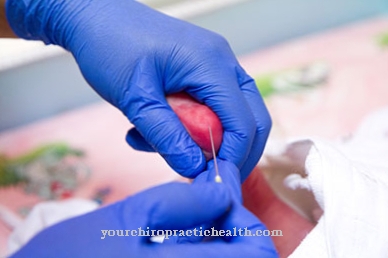
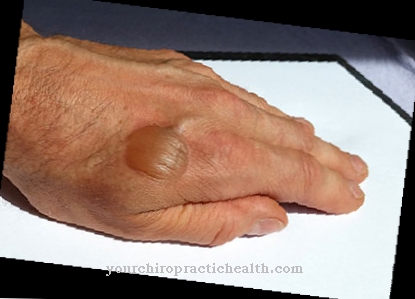
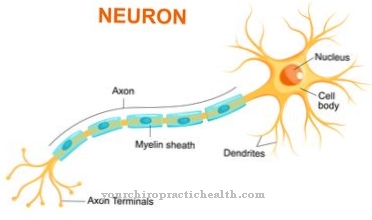
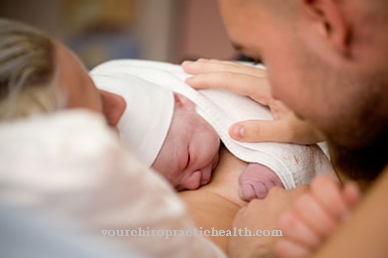
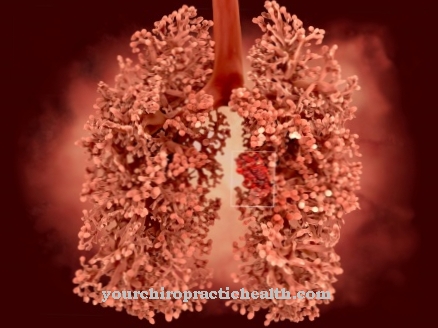

















.jpg)



